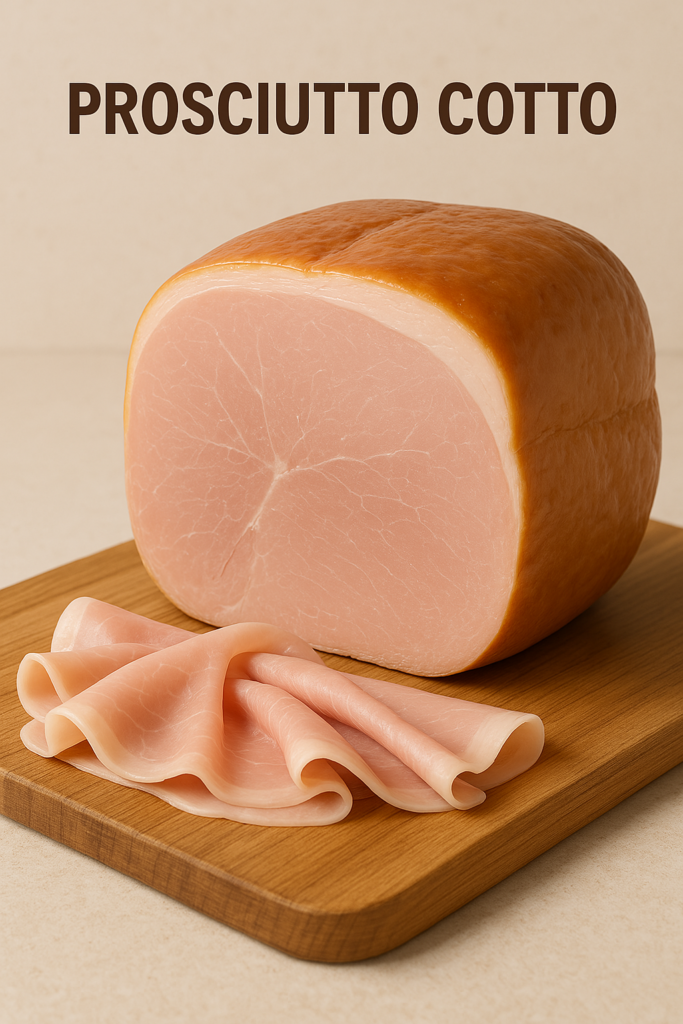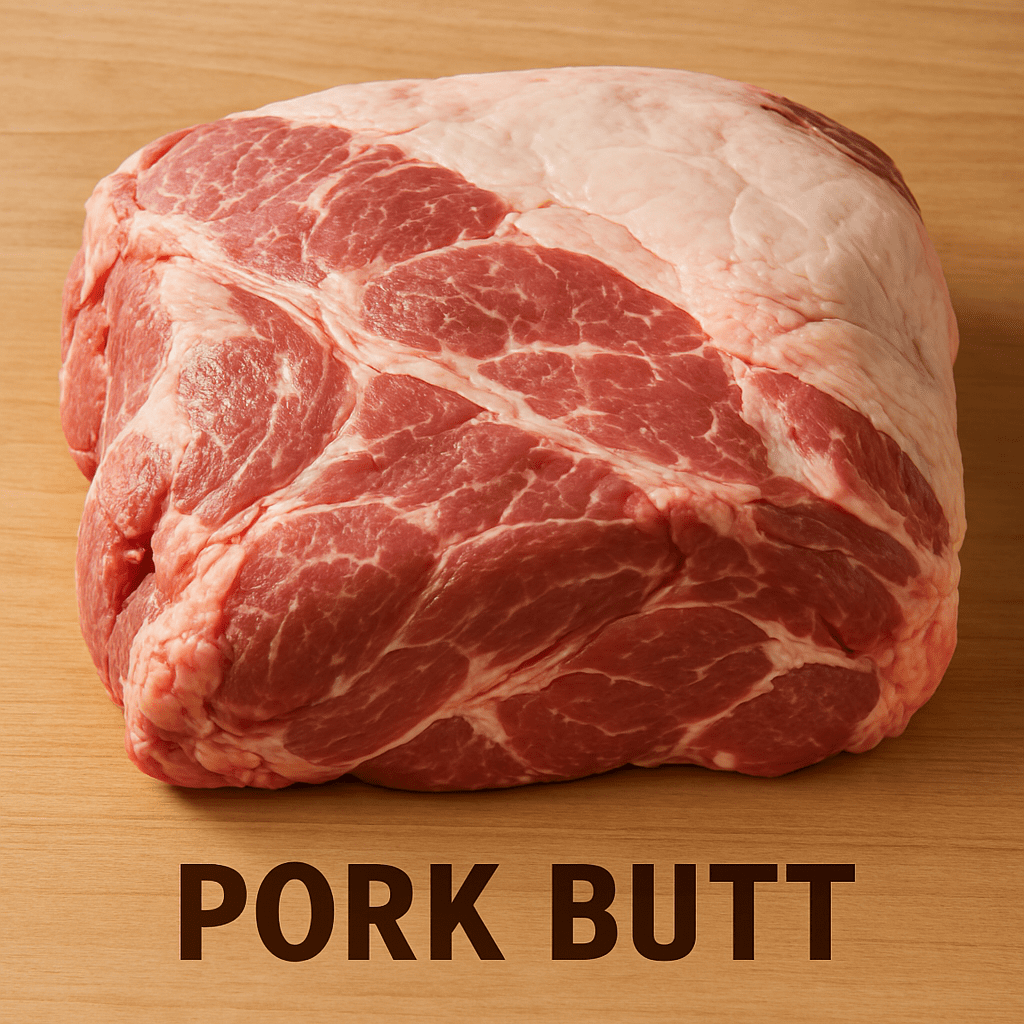Prosciutto Cotto
Introduction
In the vast landscape of Italian salumi, prosciutto cotto holds a special place that’s often overshadowed by its more famous cousin, prosciutto crudo. While prosciutto crudo (raw, cured ham) receives international acclaim, prosciutto cotto—literally “cooked ham” in Italian—is the everyday staple that graces dining tables throughout Italy. From simple breakfast plates to elaborate antipasti spreads, this versatile meat offers delicate flavors that have been perfected over centuries of Italian culinary evolution.
Unlike many mass-produced hams found globally, authentic prosciutto cotto represents a harmonious balance of traditional methods and modern food science. It embodies the Italian philosophy that exceptional food requires not only quality ingredients but also patience, precision, and respect for tradition. This comprehensive exploration will take you through the history, production methods, culinary applications, and cultural significance of one of Italy’s most cherished meat products.
Historical Origins

The practice of preserving pork through cooking dates back to ancient times, with evidence suggesting that early Romans developed techniques for preparing cooked hams. However, prosciutto cotto as we recognize it today emerged in northern Italy during the late 18th and early 19th centuries, coinciding with advances in food preservation techniques.
The industrial revolution brought new methods of food production, and in regions like Lombardy, Emilia-Romagna, and Piedmont, specialized producers began perfecting the art of steam-cooking whole pork legs. These early producers developed signature brining mixtures and cooking methods that would become closely guarded family secrets, passed down through generations.
By the early 20th century, prosciutto cotto had become firmly established in Italian gastronomy, with regional variations developing distinctive characteristics. The post-World War II economic boom in Italy led to wider commercialization, though many traditional producers maintained their artisanal approaches, creating the spectrum of quality and styles available today.
Production Process in Detail
The creation of authentic prosciutto cotto involves several precise stages, each critical to developing its characteristic flavor and texture:
Selection of Raw Materials
Production begins with careful selection of pork legs, typically from heritage breeds raised in specific regions of Italy. Premium versions often use meat from pigs raised on specialized diets, such as those used for Parma or San Daniele prosciutto production. The ideal specimens have a balanced fat-to-meat ratio that will contribute to moisture retention and flavor development during cooking.
Preparation and Trimming
Once selected, the legs undergo meticulous trimming. Unlike prosciutto crudo, which is cured with the skin on, prosciutto cotto requires removal of the skin and precise shaping of the meat. Expert butchers trim away excess fat while leaving enough to maintain moisture and flavor during cooking. The bones are carefully removed while preserving the integrity of the muscle groups.
Brining Process (Salamoia)
Perhaps the most crucial step in defining a producer’s signature style is the brining process. Traditional brine mixtures (salamoia) combine salt with a proprietary blend of herbs and spices. Common ingredients include:
- Black peppercorns
- Juniper berries
- Bay leaves
- Rosemary
- Sage
- Nutmeg
- Cinnamon
- Cloves
- White wine
High-quality producers avoid artificial additives, relying instead on natural preservatives and flavor enhancers. The meat is either submerged in the brine solution or, more commonly in modern production, injected with the mixture to ensure even distribution throughout the muscle tissue. This process typically takes 1-3 days, during which the flavors penetrate the meat and begin the transformation process.
Massaging and Resting
After brining, the ham undergoes a gentle mechanical massage that helps distribute the brine evenly throughout the meat. This massaging process, often performed in specialized tumbling machines, also tenderizes the meat and improves its ability to retain moisture during cooking. The meat then rests in refrigeration for 1-2 days, allowing the flavors to develop further and the proteins to begin breaking down.
Molding and Shaping
The prepared ham is placed into specialized molds that give prosciutto cotto its characteristic oval or rectangular shape. These molds apply gentle pressure, compacting the meat fibers and ensuring even cooking. Premium products often use traditional methods where the ham is hand-tied with string rather than machine-pressed, allowing for a more natural final appearance.
Cooking Process
Unlike many commercial hams that are cooked quickly at high temperatures, authentic prosciutto cotto undergoes a slow cooking process in temperature-controlled steam ovens. The cooking typically follows a precise temperature curve:
- Initial cooking at approximately 140°F (60°C) for several hours
- Gradual increase to 160-170°F (70-75°C)
- Final cooking until the core temperature reaches about 160°F (71°C)
This gentle cooking method, which can take up to 24 hours for large pieces, preserves the ham’s delicate texture and prevents moisture loss. Some regional variations incorporate wood smoke during part of the cooking process, creating distinctive flavored variants like Prosciutto Cotto di Praga or Prosciutto Cotto Affumicato.
Cooling and Aging
After cooking, the ham undergoes controlled cooling to prevent bacterial growth while preserving texture. It’s then aged for a short period (typically 1-2 weeks) in temperature and humidity-controlled environments. This brief aging allows flavors to mature and excess moisture to evaporate, concentrating the ham’s delicate taste.
Regional Variations and Classifications
Northern Italian Styles
The most renowned prosciutto cotto comes from northern Italy, with each region offering subtle variations:
- Lombardy: Known for delicately flavored hams with minimal seasonings, allowing the natural pork flavor to dominate.
- Piedmont: Often features more aromatic herb blends and occasionally includes truffle infusions in premium products.
- Emilia-Romagna: Produces balanced hams that complement the region’s other famous cured meats and cheeses.
- Friuli-Venezia Giulia: Home to the famous “Prague-style” smoked variants, influenced by Central European traditions.
Quality Classifications
Italian regulations classify prosciutto cotto into several categories based on quality characteristics:
- Prosciutto Cotto Scelto (Selected): The basic quality level, meeting minimum standards for meat quality and processing.
- Prosciutto Cotto Alta Qualità (High Quality): Must adhere to stricter standards, including:
- Use of whole pork thighs only
- Limitations on added water content
- Restrictions on additives
- Minimum maturation periods
- Prosciutto Cotto Premium: The highest classification, with even stricter requirements regarding meat selection, processing methods, and ingredient quality. These products often come from specific geographic regions and feature distinctive production methods.
Nutritional Profile and Health Considerations
Prosciutto cotto offers several nutritional advantages over other processed meats:
- Protein Content: Provides approximately 18-20g of protein per 100g serving
- Fat Content: Contains about 5-15g of fat per 100g (varies by product)
- Sodium Levels: Generally lower in sodium than dry-cured meats like prosciutto crudo
- Calories: Typically ranges from 140-180 calories per 100g serving
Health-conscious consumers should note that while traditional prosciutto cotto contains no artificial preservatives, many commercial versions include nitrites and phosphates. Premium producers increasingly offer nitrite-free alternatives in response to consumer demand.
Culinary Applications
The mild, delicate flavor of prosciutto cotto makes it exceptionally versatile in Italian cuisine:
Traditional Uses
- Antipasti: Thinly sliced and arranged on platters alongside cheeses and vegetables
- Tramezzini and Panini: The quintessential Italian sandwich filling, often paired with soft cheese, butter, or artichokes
- Pizza Toppings: A common addition to pizza, particularly the classic “Prosciutto e Funghi” (ham and mushroom)
- Pasta Fillings: Used in stuffed pasta like tortellini and ravioli, often combined with cheese
- Involtini: Rolled around fillings of cheese, vegetables, or other meats
Modern Culinary Applications
Creative chefs have expanded the use of prosciutto cotto beyond traditional applications:
- Incorporated into savory pastries and quiches
- Used in egg dishes like frittatas and omelets
- Added to risottos for depth of flavor
- Finely chopped and used in terrines and pâtés
- Rendered crisp as a garnish for soups and salads
Selecting and Storing Quality Prosciutto Cotto
Quality Indicators
When selecting prosciutto cotto, look for these signs of superior quality:
- Appearance: Even pink color without gray areas or excessive white parts
- Texture: Moist but firm, slices should hold together without being rubbery
- Aroma: Delicate, sweet smell with herbal notes
- Ingredients List: Shorter is generally better, with minimal additives
- Production Method: Look for “Alta Qualità” designation or artisanal production
Proper Storage
To maintain flavor and freshness:
- Store in the refrigerator at 35-40°F (2-4°C)
- Keep wrapped in butcher paper or specialized food paper (avoid plastic wrap for long-term storage)
- Consume within 3-5 days after opening
- If vacuum-sealed, can typically be stored for up to 2-3 weeks
Cultural Significance in Italian Life
Prosciutto cotto occupies a unique position in Italian food culture, bridging everyday meals and special occasions:
Family Dining
In many Italian households, prosciutto cotto is a refrigerator staple, ready to be sliced for quick sandwiches, afternoon snacks, or light dinners. Its mild flavor makes it particularly popular with children, often serving as an introduction to Italy’s salumi tradition.
Regional Celebrations
During holidays and festivals, regional variations of prosciutto cotto might appear in special preparations. In northern regions, it’s commonly featured in Christmas and Easter antipasti spreads, while summer festivals might showcase it in rustic outdoor meals paired with local wines.
Contemporary Market and Future Trends
Today’s prosciutto cotto market reflects both reverence for tradition and adaptation to modern consumer preferences:
Artisanal Revival
A growing movement of artisanal producers has emerged, focusing on heritage breeding programs, traditional production methods, and sustainable practices. These small-batch producers often work directly with specific farms to ensure quality standards from farm to table.
International Recognition
While less famous internationally than its raw counterpart, prosciutto cotto has gained appreciation among global chefs and food enthusiasts seeking authentic Italian flavors. Export markets have expanded, particularly in Europe, North America, and parts of Asia, though strict regional laws often govern what can officially be called “prosciutto cotto.”
Innovation in Production
Forward-thinking producers are exploring innovations while respecting tradition:
- Natural preservation methods that eliminate nitrites
- Sustainable packaging solutions
- Organic certification
- Specialty feed programs for the source animals
Conclusion
Prosciutto cotto represents the perfect balance of simplicity and complexity that characterizes the best of Italian cuisine. Its understated elegance comes not from elaborate preparation but from exceptional ingredients and time-honored methods. While it may never achieve the international fame of prosciutto crudo, those who appreciate the subtle artistry of Italian gastronomy understand that prosciutto cotto deserves equal recognition for its unique qualities.
Whether enjoyed in a humble sandwich, as part of an elaborate antipasto, or incorporated into sophisticated modern cuisine, prosciutto cotto continues to embody the essence of Italian food culture—where everyday ingredients are transformed through care and tradition into something extraordinary.
Related

